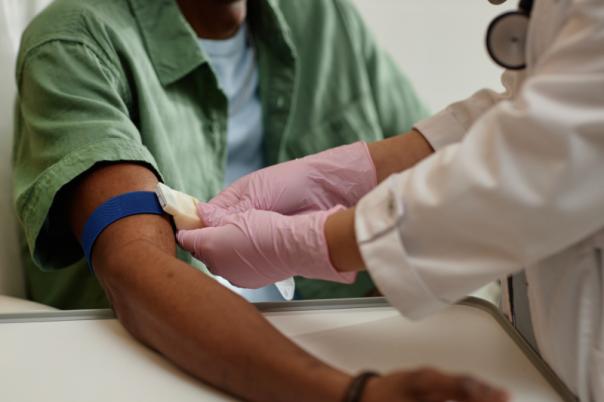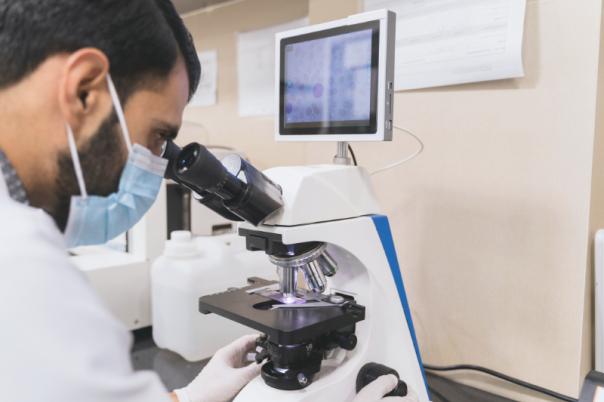Key Takeaways:
- Precision medicine can move quickly from lab to clinic with the right support.
- Diagnostics face more funding and adoption barriers than therapies.
- Few biomarker discoveries reach clinical use due to lack of validation and incentives.
- AI and data tools help, but reimbursement and regulation lag behind.
- More collaboration, funding, and focus on implementation are needed for progress.
At a recent collaboration forum, a diverse panel of leaders from academia, industry, and clinical research gathered to address one of life science’s most enduring challenges – how to transform biomarker and diagnostic discoveries into tangible, real-world impact.
The session brought together experts across the research-to-clinic continuum to share examples of success, dissect systemic barriers, and propose strategies for making the pathway from discovery to deployment faster, fairer, and more sustainable.
From Lab to Clinic: Stories of Success
The moderator opened with an unusual invitation: to start with successes rather than problems. The panel responded with case studies showing that, when the right structures align, precision medicine can move from concept to clinical practice remarkably quickly.
One example described how an academic consortium developed an alternative companion diagnostic for ovarian cancer, transferring it from research to hospital laboratories within months. The test is now routinely used for patients nationwide and achieved reimbursement faster than expected.
Other participants highlighted how targeted diagnostics – such as mutation-specific assays and immune expression tests – have reshaped oncology, enabling clinicians to select therapies based on tumour biology rather than broad histological labels. Those who pursued focused, well-validated niches rather than expansive markets often saw greater clinical adoption and clearer patient benefit.
In neurology, rapid advances in biomarker detection are beginning to transform the field. Plasma-based assays now detect neurodegenerative changes long before symptoms appear, opening the door to preventative strategies. “We can now see disease signatures decades in advance,” one speaker noted, “and that changes everything about how we think of intervention.”
Barriers That Slow Translation
Even amid optimism, the panel remained realistic about the barriers that slow the journey from bench to bedside. Chief among them is the persistent imbalance between investment in therapeutics and diagnostics.
Once a new therapy gains regulatory approval, funding and adoption follow quickly. For diagnostics, there is often no parallel mechanism. This gap discourages investors and can delay implementation by years. One biomarker for preeclampsia, participants noted, took nearly two decades to achieve widespread adoption despite strong evidence and early endorsement.
Another structural issue lies upstream in academia. Although more than 100,000 biomarker studies have been published, only a small fraction progress to validation or clinical deployment. Academic reward systems still privilege novelty over follow-through. As one participant put it, “Publishing the discovery is celebrated; proving it works is rarely rewarded.”
The lack of translational training compounds the problem. Researchers skilled in discovery may lack the regulatory, commercial, or implementation expertise needed to move their findings forward. “Scientific innovation and system navigation require different toolkits,” one panellist summarised, “and few institutions teach both.”
Funding, Collaboration, and the Industry Role
Funding for large-scale validation studies remains a chronic bottleneck. Encouragingly, the group noted emerging models that support late-stage biomarker implementation, including dedicated philanthropic funds designed to close the gap between discovery and deployment.
Industry representatives described collaborative validation networks that connect reference laboratories across multiple regions, enabling standardised testing, data sharing, and cost distribution. These partnerships accelerate the evidence base while allowing smaller research groups to participate in global-scale validation efforts.
Still, challenges remain within large organisations, where internal silos between therapeutic and diagnostic divisions often hinder alignment. Even when incentives to collaborate exist, differing timelines, budgets, and success metrics can slow progress.
AI, Data, and Regulation: Emerging Frontiers
Artificial intelligence featured prominently in the discussion – as both a driver of progress and a source of frustration. AI has already improved accuracy in pathology, imaging, and predictive modelling, but its adoption in healthcare is uneven.
Participants noted that while AI tools often outperform traditional diagnostics, reimbursement frameworks lag behind. “Technology has outpaced the economics,” one expert observed. “If insurers won’t pay for AI-assisted testing, only a few elite centres can use it.”
Regulatory fragmentation adds further complexity. While new national initiatives are beginning to align regulators and health technology assessment bodies, these programs remain limited in scope. The panel called for greater international harmonisation among agencies to avoid duplication and shorten the time from approval to access. Coordinated evidence requirements across jurisdictions could, they argued, make precision diagnostics both faster and more affordable to implement.
Building a Culture of Implementation
Toward the close of the session, the panellists reflected on the imbalance between research investment and real-world adoption. A health policy report was cited that likened this imbalance to a penny-farthing bicycle: a large front wheel representing research spending, and a tiny rear wheel representing implementation funding.
“Five years later, the picture still fits,” one speaker admitted. “We continue to invest heavily in discovery, but devote little to making it usable.”
The takeaway was unambiguous: success in precision medicine depends as much on closing the final mile – validation, regulation, reimbursement, and clinician education – as on achieving the initial discovery. Implementation science, they argued, must be valued as highly as basic research.
The Road Ahead
As the discussion turned to the future, participants agreed on the need for more pre-competitive collaboration and multi-country validation frameworks that reflect the diversity of real patient populations. Open data platforms and shared governance models could allow industry, academia, and regulators to co-create standards that benefit all.
One panellist summarised the aspiration simply: “If we can identify where competition ends and collaboration begins, we can move from isolated success stories to systemic progress.”
The roundtable concluded with a call to action: to make precision medicine not just a promise, but a practice. Achieving that vision will require collective commitment – to harmonised regulation, sustainable funding, transparent data sharing, and a culture that prises implementation as much as innovation.








